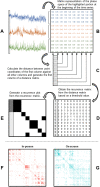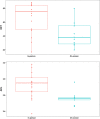Being in a crowd bonds people via physiological synchrony
- PMID: 35022461
- PMCID: PMC8755740
- DOI: 10.1038/s41598-021-04548-2
Being in a crowd bonds people via physiological synchrony
Abstract
Collective events can generate intense emotions, shape group identities, and forge strong bonds. Do these effects extend to remote participation, and what are the psychological mechanisms underpinning their social power? We monitored psycho-physiological activity among groups of basketball fans who either attended games in-person (in a stadium) or watched games live on television in small groups. In-person attendance was associated with greater synchronicity in autonomic nervous system activation at the group level, which resulted in more transformative experiences and contributed to stronger identity fusion. Our findings suggest that the social effects of sports depend substantially on the inter-personal dynamics unfolding among fans, rather than being prompted simply by watching the game itself. Given the increasing prevalence of virtual experiences, this has potentially wide-reaching implications for many domains of collective human interaction.
© 2022. The Author(s).
Conflict of interest statement
The authors declare no competing interests.
Figures





References
-
- Durkheim, É. The elementary forms of the religious life. (G. Allen & Unwin, 1915).
-
- Whitehouse, H. Dying for the group: Towards a general theory of extreme self-sacrifice. Behav. Brain Sci.41, e192 (2018). - PubMed
Publication types
MeSH terms
Grants and funding
LinkOut - more resources
Full Text Sources

